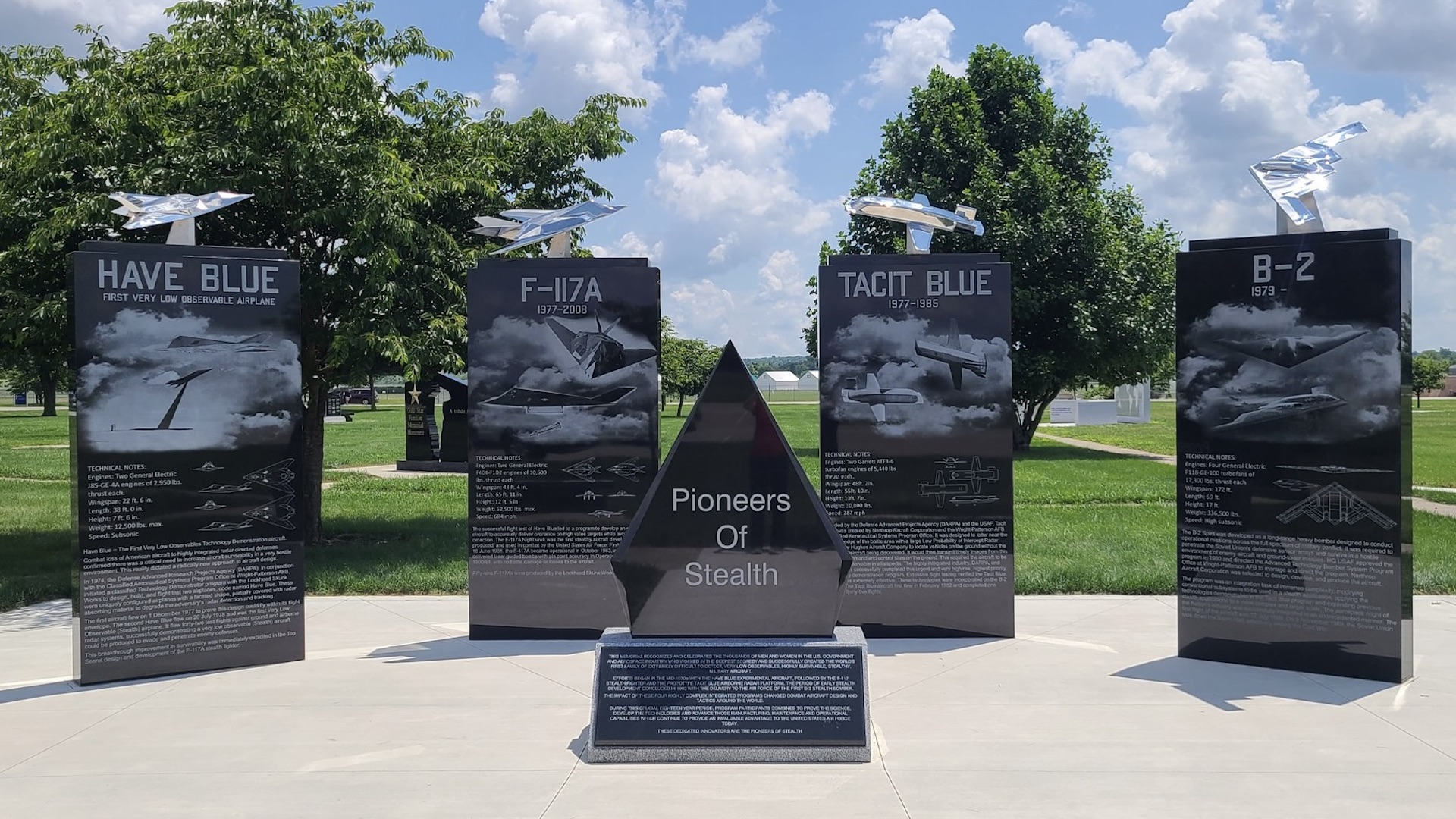A new memorial has been unveiled to commemorate those who developed the U.S. Air Force’s first low observable, or stealth, aircraft. The ‘Pioneers of Stealth’ memorial features four obelisks, each dedicated to a key program related to the dawn of stealth technology dating back to the 1970s. The memorial is located at the National Museum of the United States Air Force Memorial Park at Wright-Patterson Air Force Base in Ohio.
The aircraft commemorated include Lockheed’s Have Blue that led to the F-117A Nighthawk and Northrop Grumman’s Tacit Blue ‘Whale’ that led to the B-2 Spirit. Thanks to those early programs, as well as other, fragmented efforts that date back even further, stealth technology revolutionized aerial warfare and now constitutes a core component of many of the U.S. military’s current and future crewed and uncrewed combat aircraft. It’s also worth noting that the four programs displayed as part of the memorial were once so deeply classified it would have been nearly unimaginable to think they would one day be highlighted in such a public manner.
A two day special event was held between July 16-17 to unveil the memorial. Tying in with this, July 17 also marked the 34th anniversary of the B-2 Spirit stealth bomber’s first flight.
The memorial was proposed and designed by The Pioneers of Stealth — a group of over 200 individuals from the U.S. government and defense industry involved in the development of stealth technology since the latter twentieth century.
According to the organization’s webpage on the development of the memorial, its footprint measures 30 feet by 30 feet, with the height restricted to 10 feet, as per NMUSAF specifications. A triangular dedication obelisk sits to the front with information mounted on its base. The four granite obelisks to the rear feature key details on the history of each aircraft, and are arranged in chronological order — Have Blue, F-117A, Tacit Blue, and B-2 — to reflect the growth of stealth technology during its early years. The black granite is an obvious callback to a color that has become synonymous with stealth aircraft and the ‘black’ programs they originated from.
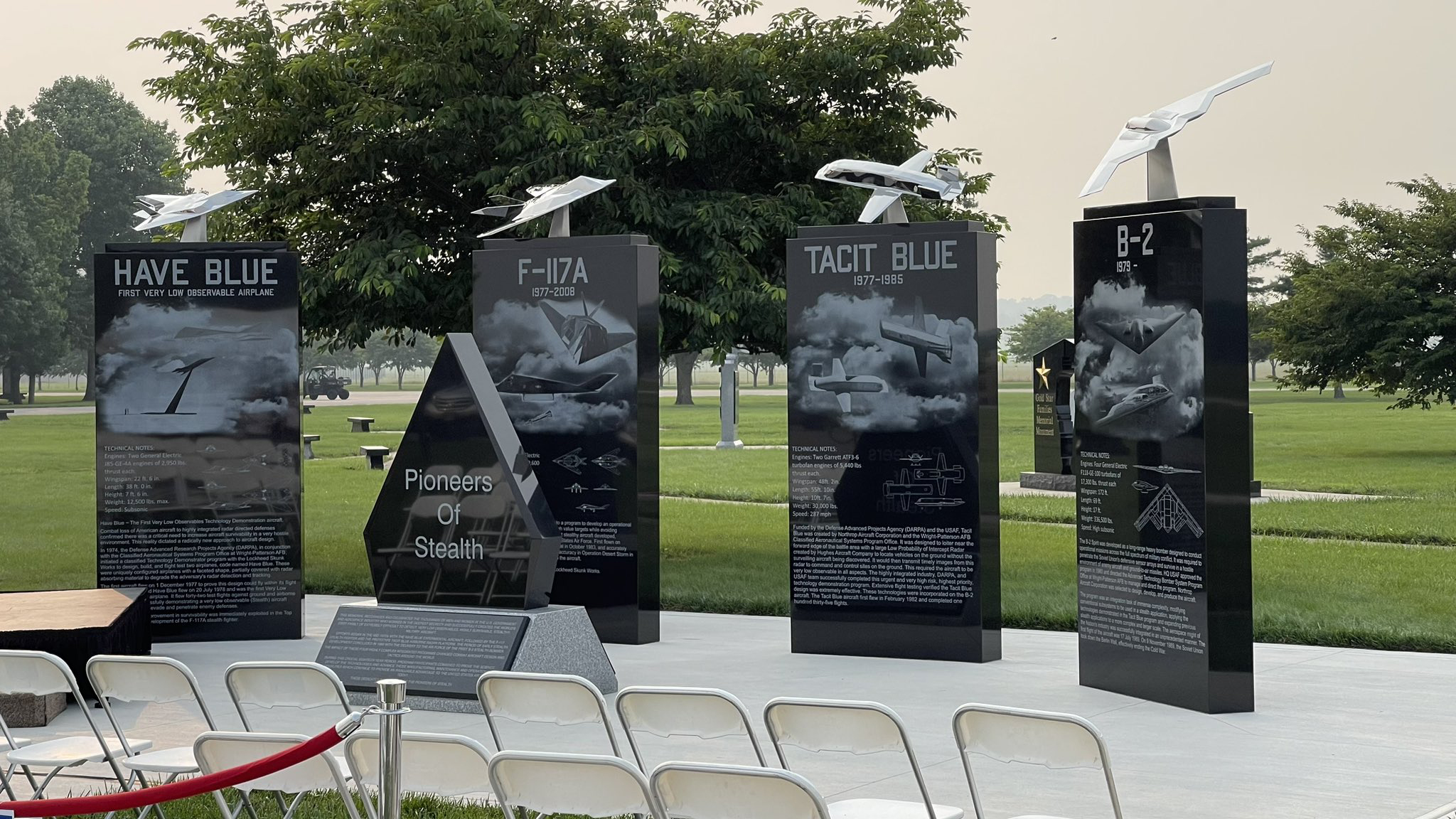
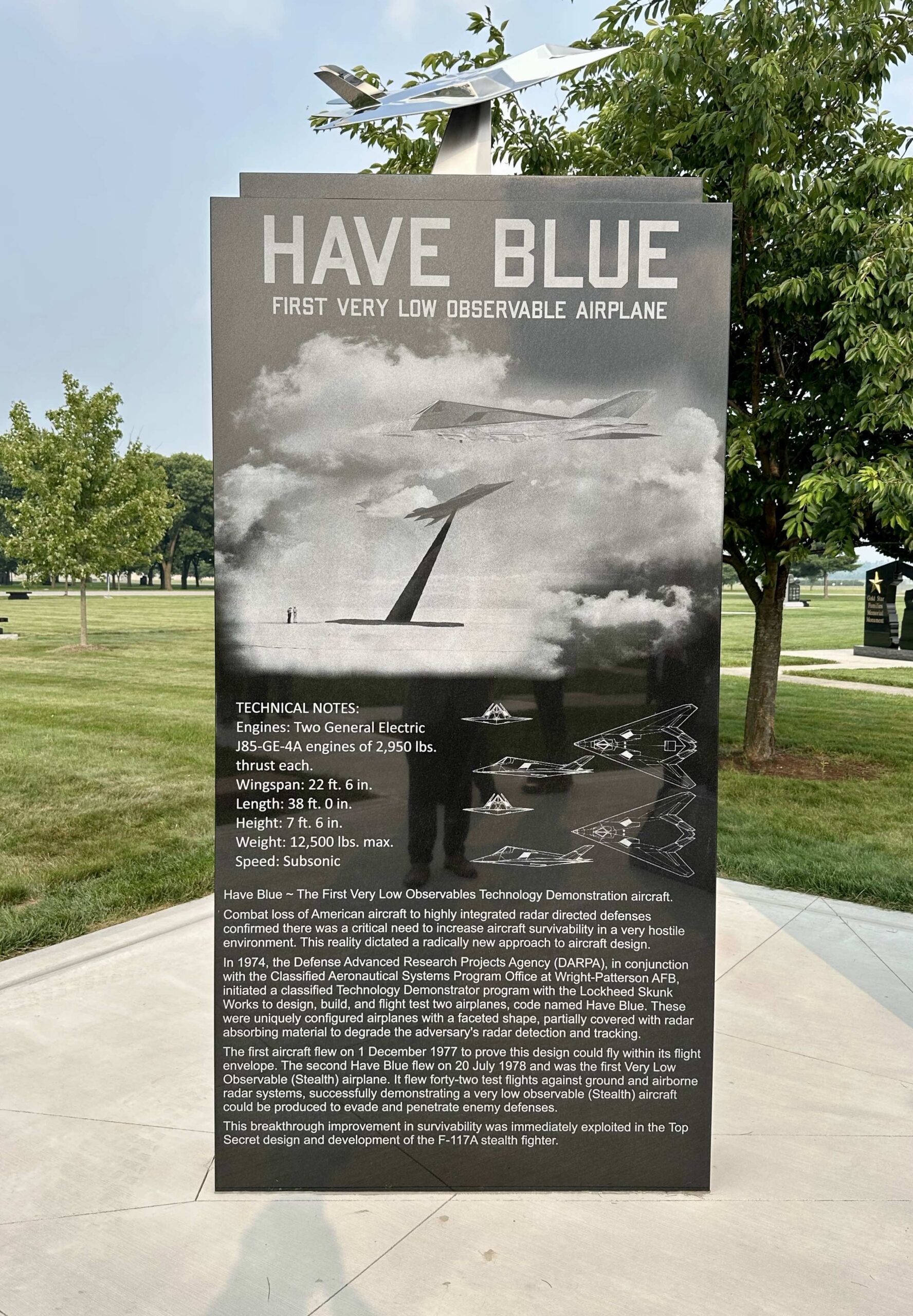
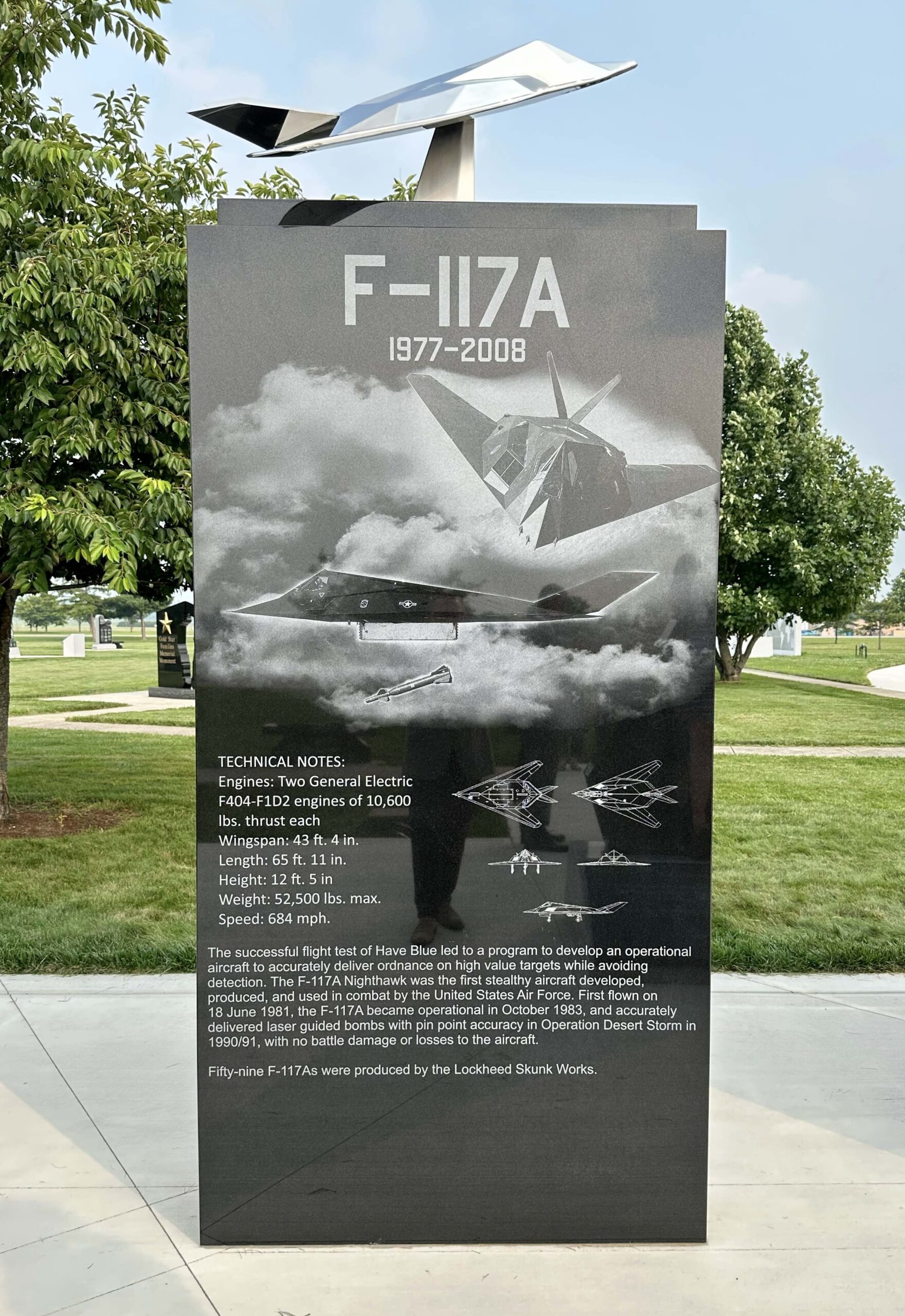
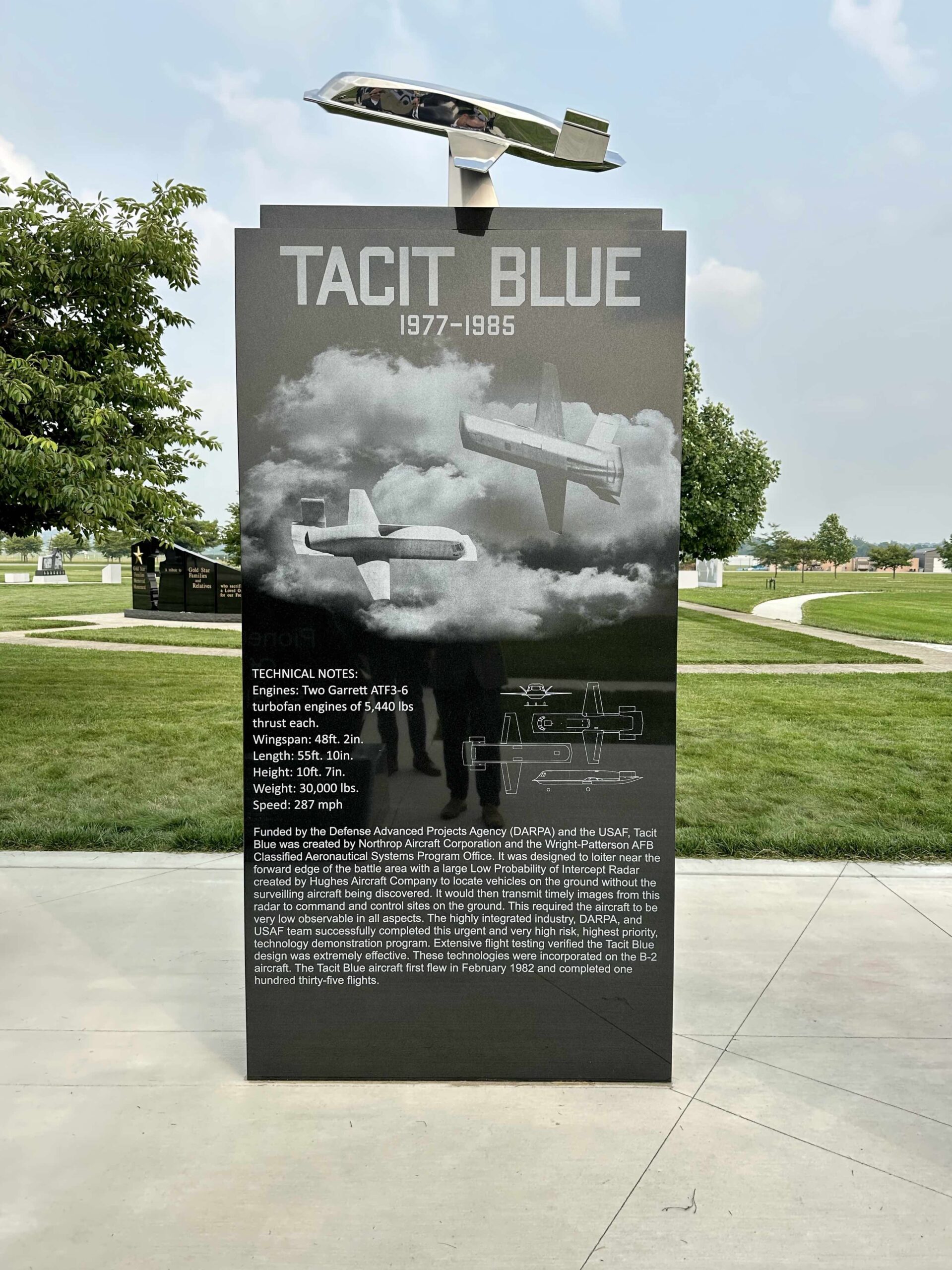

The memorial also features models of the four aircraft, which are made of polished stainless steel and mounted to the top of the rear obelisks via pylons. Those pylons, shaped as elongated quadrangles, are meant to resemble those used to test the radar cross sections of aircraft going back to the dawn of stealth.
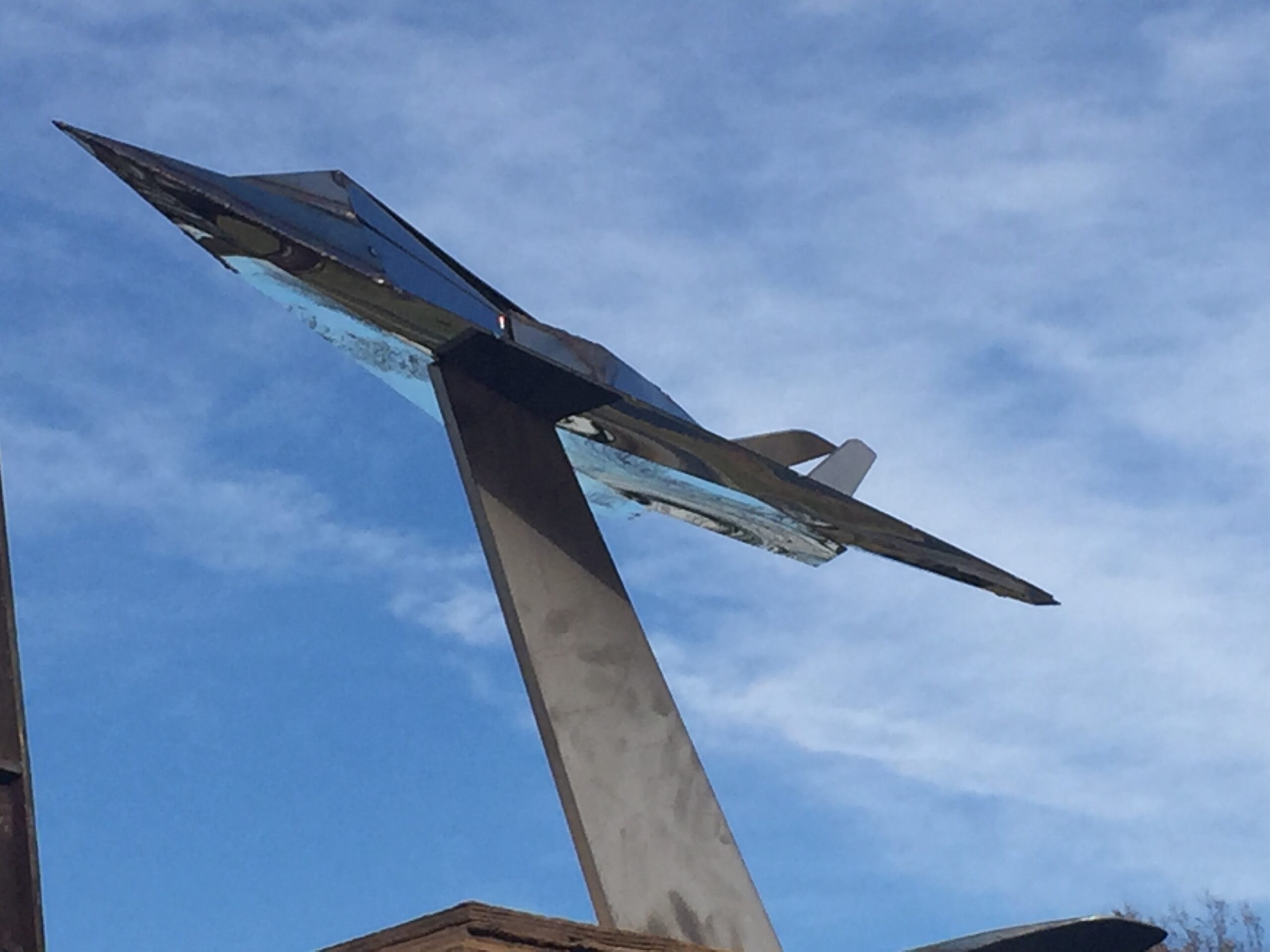
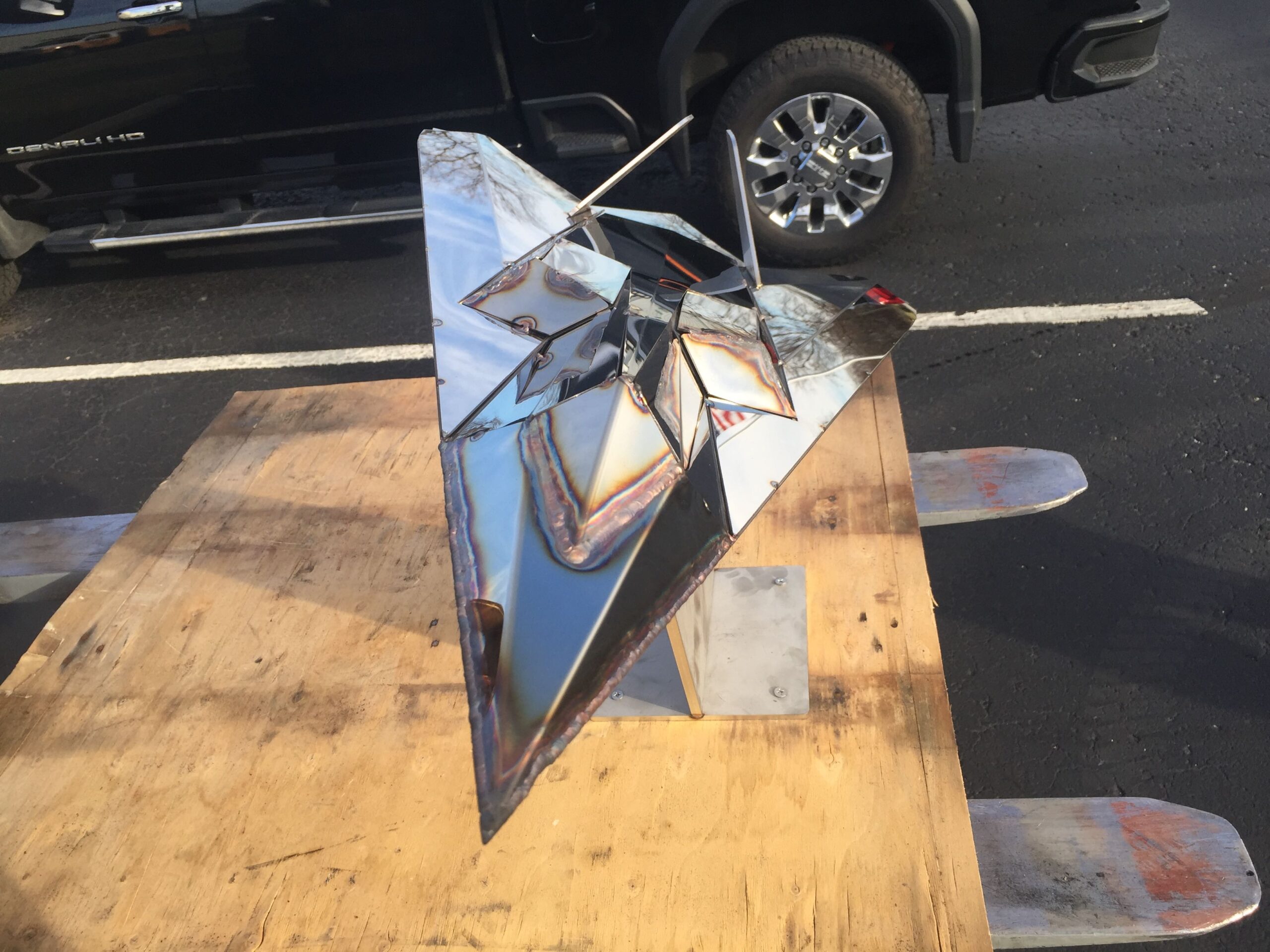
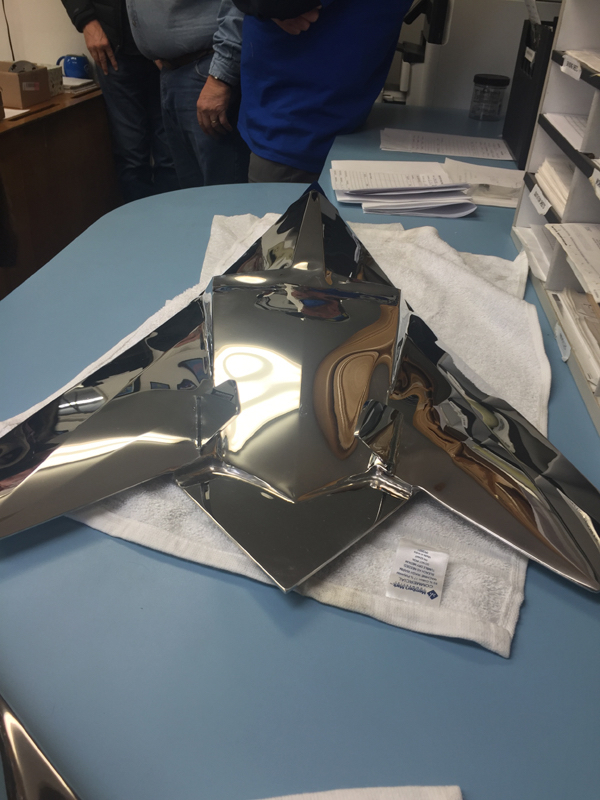
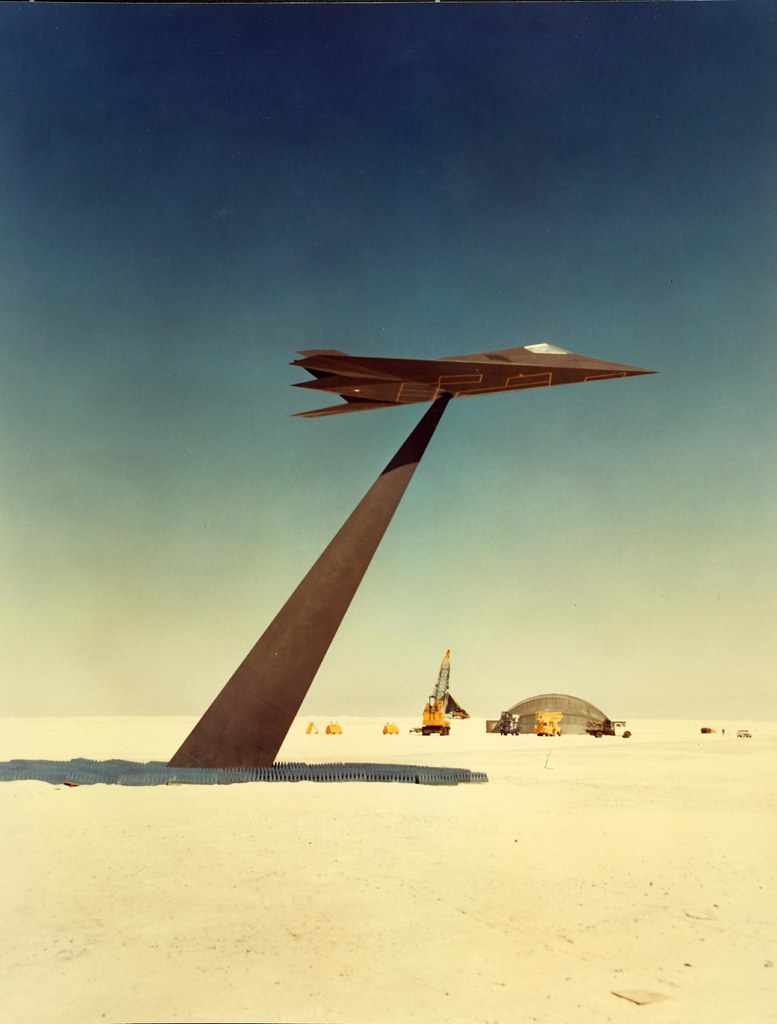
The size of the models are not to scale, The Pioneers of Stealth website notes, and are not intended to look completely realistic, but are more representative in style. The Tacit Blue model measures 30 inches in length with a 22 inch wingspan; the B-2 measures 22 inches in length with a 41 inch wingspan; the Have Blue measures 31 inches in length with a 16 inch wingspan; and the F-117A measures 37 inches in length with a 24 inch wingspan. All of these aircraft aside from Have Blue are on display in the museum at Wright-Patterson AFB.
The prime contractor for the memorial was Morrison Monuments which has experience creating large-scale civic memorials of various shapes and sizes. Based out of Bellbrook, Ohio, Morrison Monuments was responsible for producing the four individual aircraft obelisks with wording and graphics, the center dedication obelisk, the concrete pad on which the memorial stands, the aircraft models and poles, and installing the memorial at the NMUSAF. A subcontractor, Spradlin Brothers of Springfield, Ohio, made the aircraft models.
In total, the project cost The Pioneers of Stealth $254,350, which the group was able to raise via internal fundraising. $234,850 of that total went towards the Morrison Monuments contract, while the remaining $19,500 has been paid to the Air Force Museum Foundation for “perpetual care” of the monument.
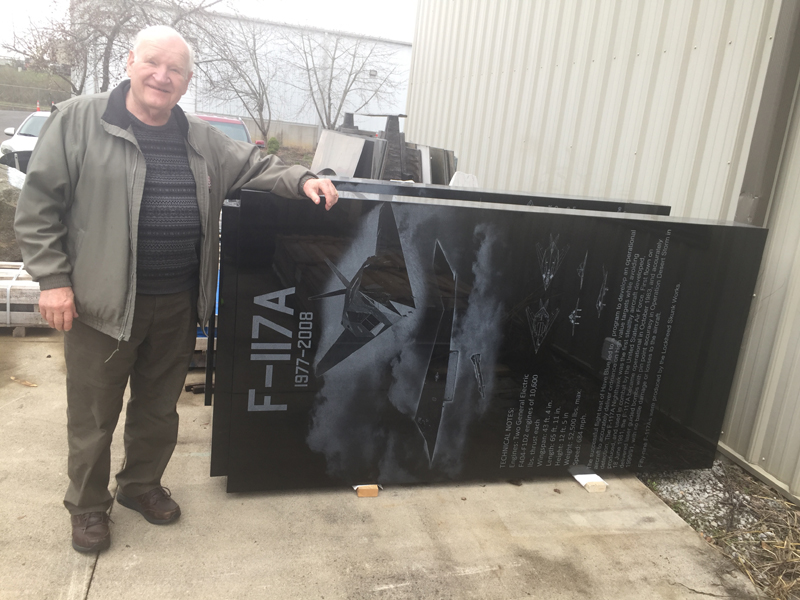
Plans for the memorial have been several years in the making. Back in early 2021, The Pioneers of Stealth initiated the ‘concept exploration’ phase for the memorial — during which members’ design concepts and inscription ideas were submitted for review by a special memorial committee. While the location for the memorial was already agreed upon, the design, graphics, and aircraft models to feature still needed to be narrowed down. The deadline for the first round of members’ entries was July 4, 2021.
From there, a preliminary design review stage followed. This phase wrapped up in late November 2021, and involved the memorial committee selecting five of the best design concepts, and five of the best inscription ideas, based on NMUSAF requirements. Following a vote on the top five designs and inscriptions by members, the committee selected the top three options for a final members’ vote.
The last phase, the ‘critical design review’ was intended to refine any remaining details, including colors, via a members’ vote. The critical design review phase ended in December 2021, with the ‘frozen’ final design being submitted formally to the NMUSAF in early 2022.
Stealth technology, designed to reduce the radar cross section and, in most cases, also the infrared signature of aircraft to such slim proportions that they can penetrate deep into enemy airspace without being detected and shot down, has roots dating back to the 1940s.
However, as The War Zone has written about in the past, work completed by Lockheed’s Skunk Works on the development of Have Blue as part of a highly classified Defense Advanced Research Projects Agency (DARPA) project in the mid 1970s is often seen as the birthplace of the stealth revolution as we know it today.
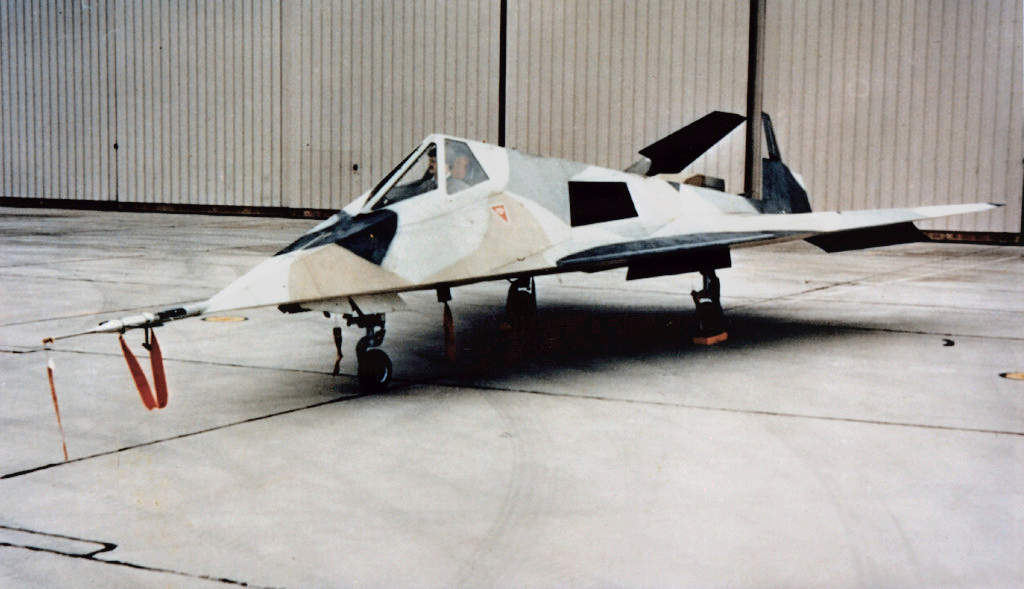
DARPA’s primary objective with the Experimental Survivable Tactical program, or XST, was to acquire an advanced demonstrator aircraft designed to be very difficult to detect by radar, especially from the front and side using passive, rather than active, design features. The secretive nature of stealth technology research and development at the time was such that Skunk Works’ advanced programs for the A-12 Oxcart and SR-71 Blackbird supersonic spy planes were unknown to DARPA.
Based on Lockheed’s “Hopeless Diamond” design, a software generated (ECHO 1) concept that ironically leveraged a Soviet scientist’s work, Have Blue won out against Northrop’s concept under the XST program. Two Have Blue demonstrators were made, the first of which took its first flight in early December 1977. While both examples crashed, work done on them proved instrumental in the development of the F-117, which first flew in 1981 and was introduced into service in 1983.
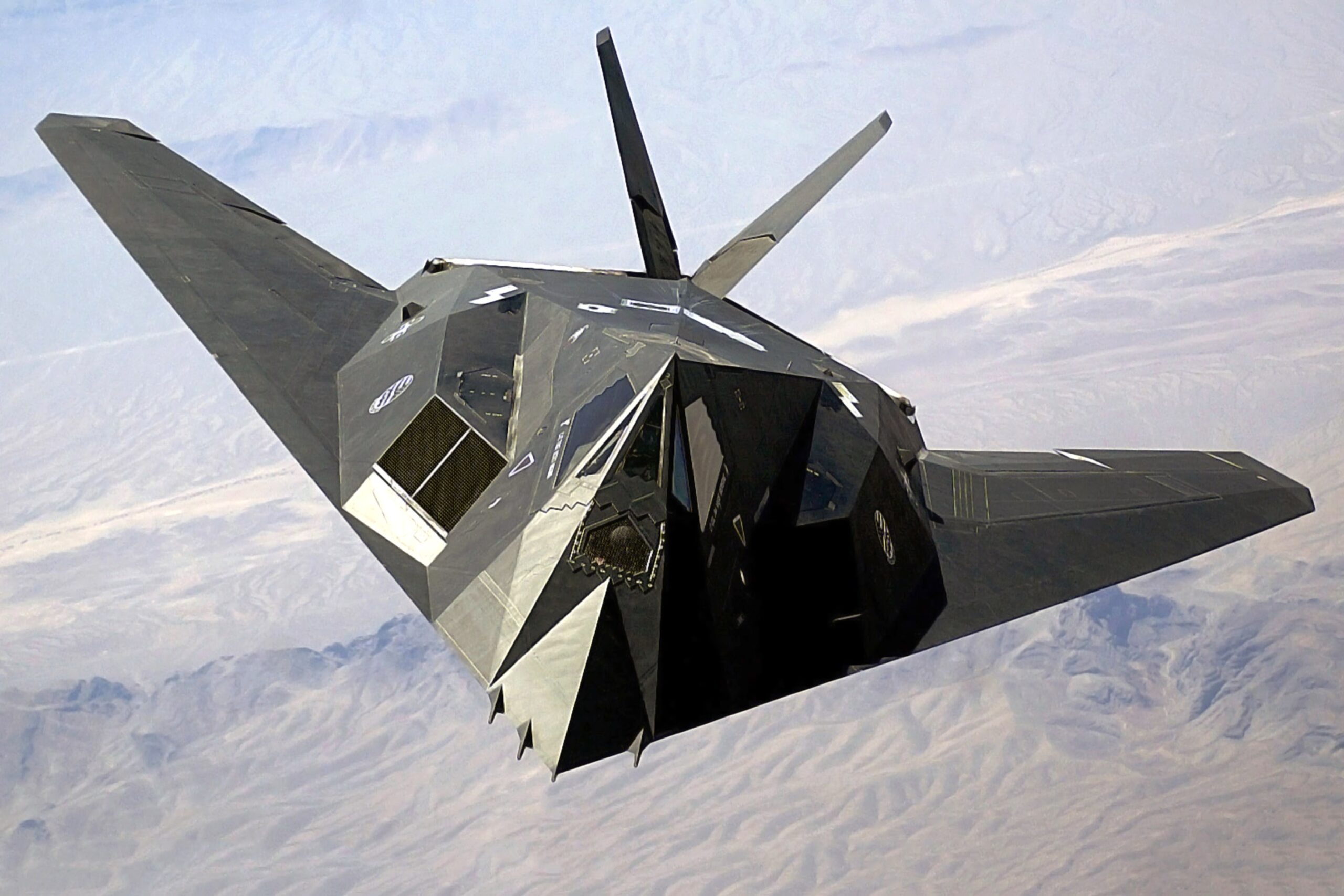
While the Air Force’s remaining F-117s were officially retired in 2008, the service has retained a number of those aircraft. As of January this year, the Air Force revealed to The War Zone it had 45 F-117s, though it’s not clear how many were flyable then or still are. Nighthawks continue to be used by the Air Force for various research and development, test and evaluation, and training purposes.
Not long after the Have Blue program wrapped up, however, Northrop’s Tacit Blue program — also known as the Battlefield Surveillance Aircraft Experimental (BSAX) — kicked off. Demonstrating advanced stealth capabilities, Tacit Blue aimed to proved that a surveillance aircraft could survive for long time periods over the battlefield while collating very high-fidelity intelligence. Packing a huge and powerful radar with low-probability of intercept (LPI) capabilities, it also represented a huge leap in the ability to pair active radar with a stealthy platform.
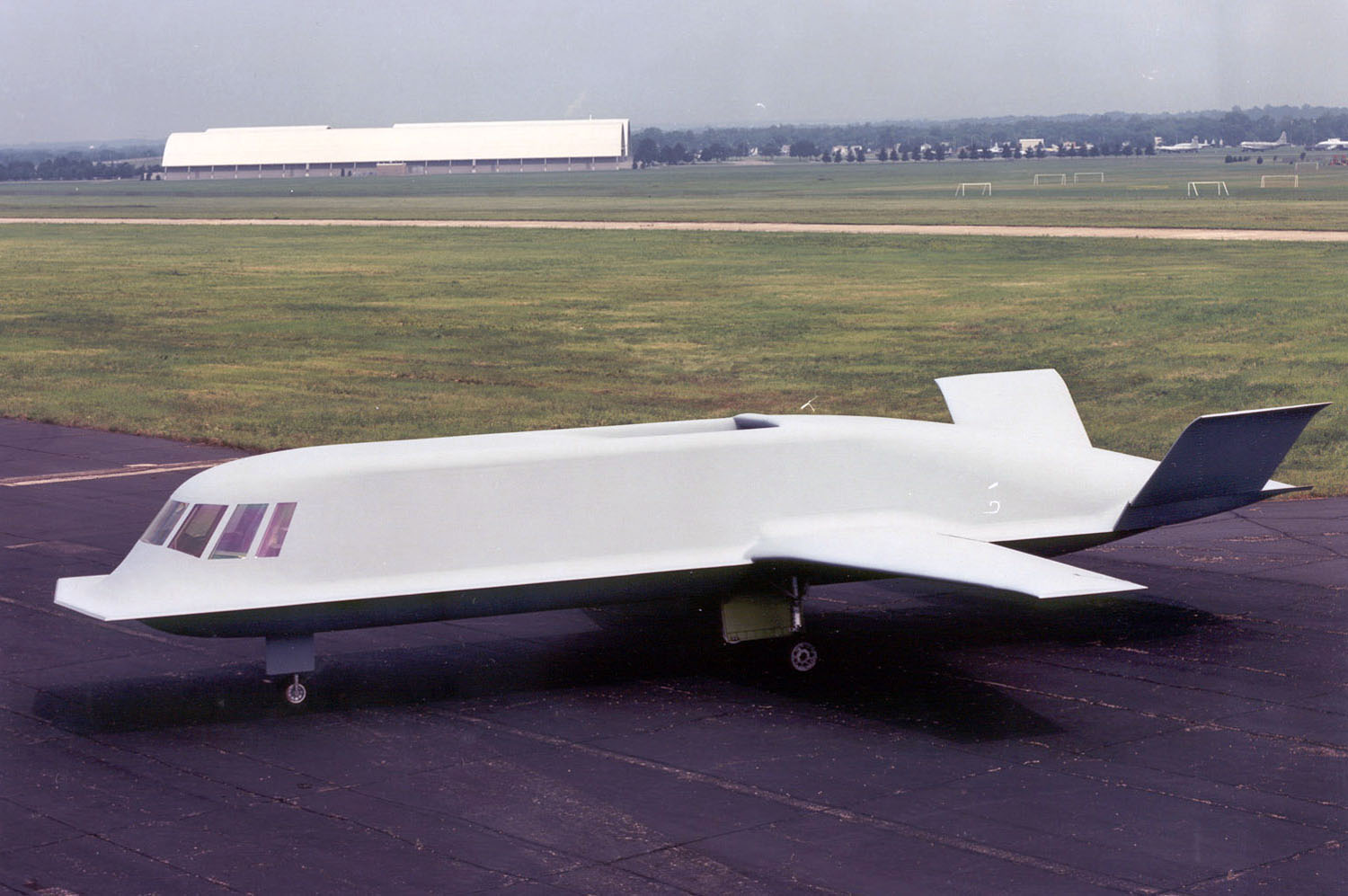
Tacit Blue’s curved design was subsequently adopted by the YF-23 and the B-2 Spirit. Although only 21 B-2s were ever built from the late 1980s to 2000, the aircraft was groundbreaking at the time and much of it still remains highly classified.

Of course, stealth technology has proliferated to more recent crewed and uncrewed platforms operated by the various branches of the U.S. military, including the F-22 Raptor and F-35 stealth fighters, as well as RQ-170 Sentinel drones. Moreover, stealth technology will continue to feature in future U.S. military aircraft. At the center of the Air Force’s Next Generation Air Dominance (NGAD) ecosystem, a sixth-generation NGAD ‘fighter’ — designed to replace the F-22 — will likely be optimized for range, payload, and low-observability (stealth). The service expects to procure around 200 of those fighters, although the exact total is subject to change. The B-21 Raider, the direct successor to the B-2, features cutting-edge ‘broad band’ stealth capabilities far superior to the B-2 in order to penetrate or otherwise obviate enemy air defenses over vast distances. The unmanned aircraft that will work together with and independently of these aircraft will also feature various degrees of stealth technology.

With that said, the “Pioneers of Stealth” memorial presents a fitting tribute to the history — and continuing legacy — of stealth technology.
Contact the author: oliver@thewarzone.com
